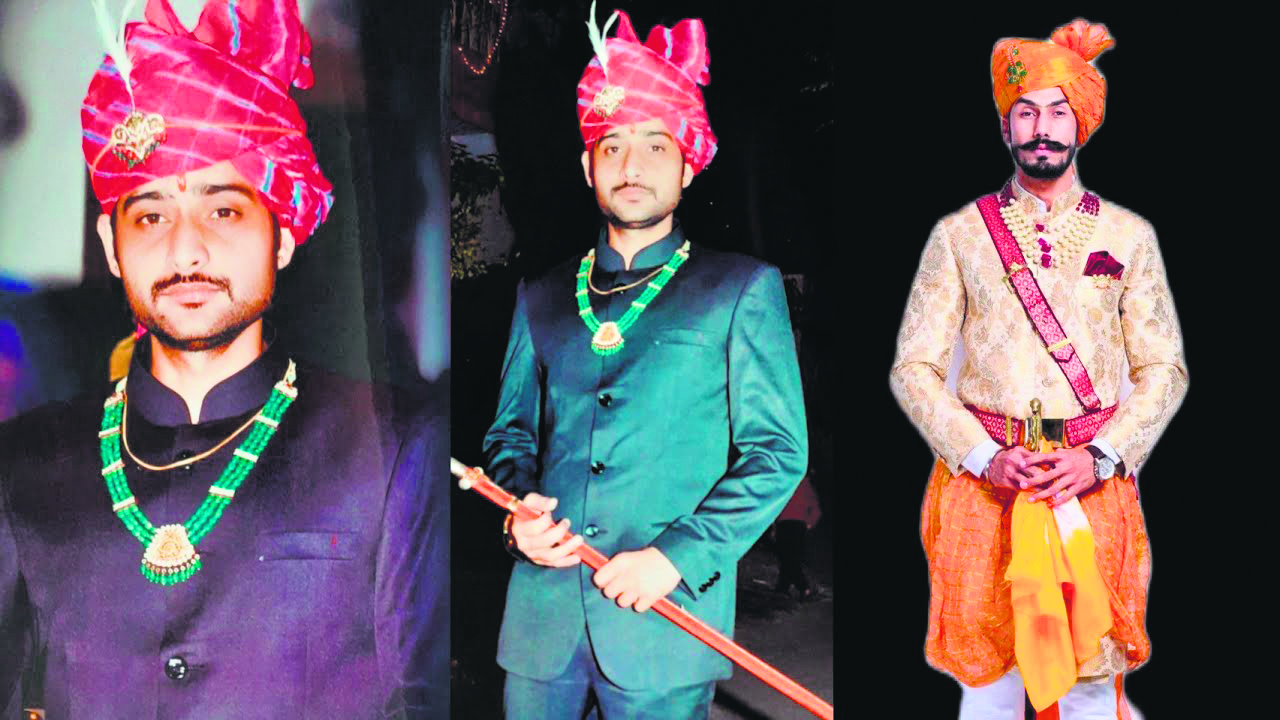India has one of the world’s oldest textile histories, dating back to prehistoric times. We find references to clothing styles and materials from the Vedic period (1500–800 BCE), which reveal changes and developments in ancient India’s textile history. A weaver in the Rigveda is described as vasovaya, the male weaver was called vaya whereas a female weaver was called vayitri.The earliest reference to the printed fabric is found in the word ‘Chitranta’ in Apastamba Srauta Sutra from the Vedic era. This suggests how textile production and craftsmanship were integral parts of well established textile culture holding immense cultural significance. Not just seen as objects of utility, they were deeply intertwined with rituals, traditions and social customs. The reverence for textiles as symbols of prestige and status grew over time, leading to their adoption by royal and princely families as a means of showcasing their wealth and power.
Indian textile traditions have a rich heritage, with many weaves gaining popularity through royal patronage. The handloom industry was the mainstay of Indian clothing for a long time until the arrival of the British, which eventually led to its decline. Despite this, Indian handlooms were known for their grandeur and high quality, with skilled weavers in each village producing exquisite textiles. Royal families provided patronage and support to artisans, weavers and textile centers, allowing these traditions to flourish. The weaves were often worn during significant royal events such as weddings, coronations and festivals. Showcasing these textiles on important occasions thereby highlighting their grandeur and adding to their royal appeal. This association with auspicious and celebratory moments further solidified their status as quintessential symbols of royal and princely India.

Pashmina
Immensely popular and in demand across the world, one such weave is that of Pashmina which began in the valley of Kashmir in the 15th century when the cashmere wool was discovered by the Persian saint Mir Sayyid Ali Hamdani. Made by skilled artisans, it includes intricate floral designs and patterns on pashminas which are inspired by floral designs prevalent in the valley. Many historians also credit Zain-ul-Abidin as the ruler who laid its foundations by first introducing tapestry woben shawls from Turkestan. Emperor Akbar of the Mughal Empire played a significant role in popularizing pashmina shawls. He was inspired by the luxurious wool shawls of the Iranian empires and began commissioning shawls made from the native pashmina wool. Initially exclusive to the Mughal royals, pashmina gained popularity due to its high-quality and softness and spread to other Asian regions. Iranian rulers traded their wool shawls for pashmina, and Sikh Maharaja Ranjit Singh introduced it to the rest of India. Pashmina shawls also became traditional dowry gifts for noble families in India and Nepal, alongside precious jewels. Apart from Pashmina, other weaves such as the Kani and the Pattu weave are also produced there.
Paithani
Another legacy that that has stood the test of time and holds a special place in weddings, adorning beautiful brides is that of Paithani weave. Originating in Maharashtra, it draws its name from the royal dynasties of Paithan. This exquisite weave combines silk and zari, featuring unique traditional motifs like Hans, Ashraffi, and Asawalli, all meticulously handwoven. What sets Paithani apart is its symmetrical design, where both sides of the saree look identical. The Paithani saree is an integral part of Maharashtrian weddings, playing a significant role in the bridal ensemble. Known as the “queen of silk sarees,” Paithani silk has graced the palaces of royalty throughout history. Queens and princesses of ancient times favored this opulent fabric, elevating it to prominence and capturing the essence of regality.
Banarasi
The Banarasi weave, originating in Varanasi, India, is another centuries-old tradition deeply rooted in the region’s cultural heritage. Benarasi saris are famous for their lavishness, intricate designs, and luxurious fabrics. The art of weaving silk was introduced to Banaras during the Mughal era around the 14th century. It quickly became a prominent center for silk production and weaving, thanks in part to the support and patronage of Mughal emperors like Akbar the Great.
Skilled artisans have passed down the weaving techniques for Banarasi saris through generations. These saris are traditionally handwoven using pure silk threads, and their designs incorporate zari, a metallic thread made of gold or silver. The zari work features detailed patterns inspired by nature, flora, fauna, Mughal art, and geometric designs. During the British colonial period, Banarasi saris gained even more popularity and became highly sought-after attire for affluent women and were often worn by royalty and nobility. The association with Indian royalty further elevated the status of Banarasi saris, making them a symbol of prestige and elegance.
Patola
Derived from the Sanskrit word “Patta,” Patola is a sacred silk fabric with miraculous powers according to Indian belief. This particular weave is said to have traveled beyond India and is treasured in Thailand, Indonesia, and Malaysia wherein it is considered a protective cloth that wards off evil and promotes good health. Indonesians take great pride in wearing Patola, referring to it as the cloth created by the gods.
In Gujarat, Patola saris emerged in the 11th century after the decline of the Solanki Empire. The Salvis, a skilled caste of silk weavers from Karnataka and Maharashtra, migrated to Gujarat to gain patronage from the ruling Solanki Rajputs. Patola saris became a symbol of social status, particularly in wedding trousseaus. Another tale suggests that King Kumarpala, 900 years ago, elevated Patola to a symbol of wealth through his patronage. Crafting a Patola sari is a labor-intensive process taking over three years. Two weavers work diligently on a traditional loom, weaving only eight to nine inches per day. Precision is crucial, with flawless positioning of the warp and weft threads to achieve the desired design.
Jamdani
Centuries ago, the kingdom of Rahmi in Bengal produced cotton fabrics so fine that they could pass through a signet ring, as noted by the Arab traveler Sulaiman. Later, Islamic influences infused these fabrics with countless motifs and colors, utilizing the magical technique of adding discontinuous threads to the loom. This gave rise to Jamdani, an exquisite form of weaving known for its intricate inlaid motifs and vibrant patterns. Jamdani weavers meticulously interlace fine warp threads with denser threads by hand, creating mesmerizing designs. From all-over florals to diagonal stripes and intricate networks, the motifs in Jamdani reflect a rich artistic heritage.
Originally woven on muslin, the finest cloth ever made by human hands, Jamdani has a lineage connected to India’s lost ethereal muslin fabrics. Despite the challenges posed by the East India Company’s destruction of the textile industry, Jamdani has endured. The craft has evolved, incorporating new techniques and expanding its palette to include silk, silver, gold, and various other threads. Today, Jamdani artisans continue to create fascinating iterations, employing their meticulous handweaving skills on diverse materials while preserving the traditional essence of this exceptional art form.
In a celebration of regal opulence, these royal weaves weave together a tapestry of exquisite craftsmanship, elegance, and heritage. From the patronage of emperors and maharajas to the skilled hands of artisans, these textiles have adorned the noblest families, embodying luxury, grace, and an enduring link to India’s cultural legacy. Each thread in these masterpieces tells a tale of royal splendor, transcending time and leaving an indelible imprint on the fabric of Indian history.























